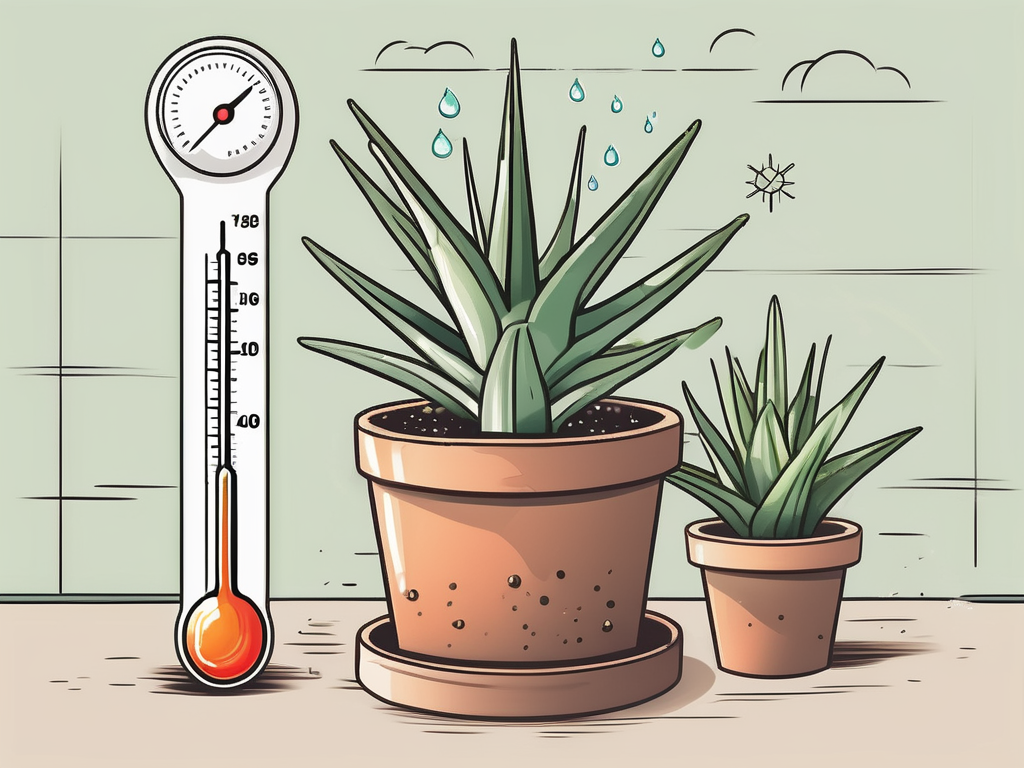
Aloe vera is more than just a spiky, green plant sitting on your windowsill. This succulent has been hailed for its healing properties for centuries, especially when it comes to soothing skin ailments. But did you know it's also a natural remedy for fungal infections? This article unveils how this humble plant can be a secret weapon in tackling those pesky fungal problems.
We'll explore the science behind aloe vera's antifungal properties and provide practical tips on using it effectively. Whether you're battling a bout of athlete's foot or looking for a natural alternative to chemical treatments, aloe vera might just be the solution you need.
Understanding Aloe Vera's Healing Properties
Aloe vera, often referred to as the "plant of immortality," has been used in herbal medicine for thousands of years. Found in a variety of climates, this resilient plant is packed with nutrients and compounds that make it a powerhouse of healing. The gel inside the leaves contains vitamins, minerals, amino acids, and enzymes that work in harmony to promote health and wellness.
One of the key ingredients in aloe vera is a group of compounds called anthraquinones. These naturally occurring chemicals are known for their antibacterial and antifungal properties, making them effective against a range of pathogens. Aloe vera also boasts a high concentration of polysaccharides, which help to hydrate and rejuvenate the skin, creating an environment where fungi struggle to thrive.
Interestingly enough, the plant's healing abilities extend beyond mere skin-deep treatment. The gel can penetrate deeply into the skin layers, delivering its antifungal agents where they're needed most. This unique characteristic makes aloe vera particularly effective in treating skin infections that can be stubborn to other treatments.
How Aloe Vera Fights Fungal Infections
Fungal infections can be quite persistent, often requiring long-term treatment to fully eradicate. Aloe vera steps in with its antifungal properties that target the root of the infection. The plant's gel creates a hostile environment for fungi, effectively stopping their growth and spread. Here's how it works:
- Inhibiting Fungal Growth: Aloe vera disrupts the cell walls of fungi, preventing them from multiplying. This is crucial for halting the progression of an infection.
- Anti-inflammatory Effects: The gel reduces inflammation and redness, which are common symptoms of fungal infections. This helps soothe the affected area, providing relief from discomfort.
- Hydrating the Skin: A well-hydrated environment is less conducive to fungal growth. The polysaccharides in aloe vera help lock in moisture, maintaining skin health.
These properties make aloe vera a natural and effective choice for treating fungal infections. Plus, it's gentle on the skin, making it suitable for those with sensitive skin or allergies to synthetic medications.
Common Fungal Infections Aloe Vera Can Help With
Fungal infections can affect various parts of the body, and aloe vera can be a versatile ally in combating them. Here are some common fungal infections that aloe vera is known to help with:
- Athlete's Foot: Characterized by itching, redness, and peeling, athlete's foot can be quite uncomfortable. Aloe vera gel can soothe the irritation while tackling the fungal growth.
- Ringworm: Despite its name, ringworm is not a worm but a fungal infection that forms circular, red patches on the skin. Aloe vera's antifungal properties can help reduce the appearance and discomfort.
- Jock Itch: This infection thrives in warm, moist environments, making the groin area a common target. Aloe vera can provide relief from itching and burning sensations.
- Nail Fungus: Fungal infections under the nails can be particularly tough to treat. Aloe vera can penetrate the nail bed, delivering its antifungal agents to the source of infection.
While aloe vera is not a cure-all, it can be an effective part of a treatment plan for these common fungal issues. Its natural approach can complement other remedies, reducing reliance on harsh chemicals.
Using Aloe Vera Gel for Fungal Infections
If you're ready to give aloe vera a try, using the gel directly from the plant is a straightforward option. Here's a step-by-step guide on how to use aloe vera gel to treat fungal infections:
- Harvest the Gel: Cut a mature leaf from the plant, preferably from the outermost section. Wash it thoroughly to remove any dirt or debris.
- Extract the Gel: Slice the leaf open lengthwise and scoop out the clear gel using a spoon. Be careful not to include the yellow sap, which can be irritating to the skin.
- Apply the Gel: Clean the affected area with mild soap and water, then pat dry. Gently apply a layer of aloe vera gel to the fungal infection, ensuring complete coverage.
- Allow to Absorb: Let the gel sit on the skin for at least 30 minutes, or longer if possible. Rinse off any remaining gel with lukewarm water.
- Repeat Regularly: For best results, apply the gel twice daily until the infection clears. Consistency is key to seeing improvement.
This method is simple and effective, leveraging the natural properties of aloe vera to support healing. Remember to use fresh gel each time for optimal results.
Making Aloe Vera Salves and Creams
If you're feeling a bit crafty, you can create your own aloe vera-based salves and creams at home. These concoctions can be stored and used over time, providing a convenient treatment option for fungal infections. Here's a basic recipe to get you started:
- Gather Ingredients: You'll need fresh aloe vera gel, coconut oil, and a few drops of tea tree oil (known for its antifungal properties).
- Melt the Coconut Oil: In a small saucepan, gently heat coconut oil until it melts. This will serve as the base for your salve.
- Mix Ingredients: Combine the melted coconut oil with aloe vera gel in a clean bowl. Stir in a few drops of tea tree oil, mixing thoroughly.
- Store the Salve: Pour the mixture into a clean, airtight container. Allow it to cool and solidify at room temperature.
- Use as Needed: Apply the salve to the affected area twice daily. Store in a cool, dry place for future use.
This DIY salve combines the soothing properties of aloe vera with the antimicrobial effects of coconut and tea tree oils, creating a potent remedy for fungal infections.
Precautions and Potential Side Effects
While aloe vera is generally safe for most people, it's important to be aware of potential side effects and precautions. Here's what to keep in mind:
- Allergic Reactions: Some individuals may be allergic to aloe vera. Before using the gel on a large area, perform a patch test on a small section of skin to check for any adverse reactions.
- Avoid Yellow Sap: The yellow sap from the aloe vera leaf can cause skin irritation and should be avoided. Be sure to extract only the clear gel for use.
- Consult a Doctor: If your fungal infection is severe or persists despite treatment, consult a healthcare professional for further advice.
By taking these precautions, you can safely incorporate aloe vera into your skincare routine, enjoying its natural healing benefits without unwanted side effects.
Growing Aloe Vera at Home
Having a fresh supply of aloe vera at your fingertips is incredibly convenient, and the good news is that growing this plant at home is a breeze. Aloe vera is a hardy succulent that thrives with minimal care. Here's how you can nurture your own aloe vera plant:
- Choose the Right Pot: Aloe vera prefers well-draining soil, so select a pot with drainage holes to prevent waterlogging.
- Provide Adequate Sunlight: Place your plant in a sunny spot, ideally where it gets indirect sunlight for six to eight hours a day. Too much direct sun can scorch the leaves.
- Water Sparingly: Aloe vera is drought-resistant, so water it only when the soil is completely dry. Overwatering can lead to root rot.
- Temperature Requirements: Aloe vera thrives in warm temperatures, between 60°F to 75°F. If you live in a colder climate, bring it indoors during winter.
By following these simple guidelines, you'll have a thriving aloe vera plant ready to provide fresh gel whenever you need it. Plus, it's a great addition to any plant-filled space, adding a touch of green to your home.
Incorporating Aloe Vera into Home Design
Aloe vera isn't just a functional plant—it's also a beautiful addition to your home decor. With its striking, architectural leaves and easy-care nature, it can enhance any room's aesthetic. Here's how you can incorporate aloe vera into your interior design:
- Accent Pieces: Use aloe vera as a centerpiece on a dining table or coffee table. Its unique shape adds visual interest and a touch of nature to your space.
- Window Sill Charm: Line up several aloe vera plants on a sunny windowsill. This not only provides a fresh supply of gel but also creates a lovely green display.
- Bathroom Oasis: Aloe vera thrives in humid environments, making it perfect for bathrooms. Place a pot near the sink or bathtub for a spa-like feel.
- Mix and Match: Pair aloe vera with other succulents for a diverse and textured display. Mixing different plant heights and colors adds depth to your home decor.
With a bit of creativity, aloe vera can be more than just a functional plant—it can be a stylish statement piece in your home.
Combining Aloe Vera with Other Natural Remedies
Aloe vera can be even more effective when used in combination with other natural remedies. Here are a few ways to enhance its antifungal power:
- Tea Tree Oil: Known for its antimicrobial properties, tea tree oil can be mixed with aloe vera gel to boost its effectiveness against fungal infections.
- Coconut Oil: This oil has natural antifungal properties and can pair with aloe vera to moisturize and protect the skin.
- Apple Cider Vinegar: Diluted apple cider vinegar can help balance skin pH and enhance aloe vera's ability to fight fungi.
Experimenting with these natural combinations can provide additional support in treating fungal infections, offering a holistic approach to skin health.
Final Thoughts
Aloe vera is a versatile and powerful ally in the fight against fungal infections. Its natural antifungal properties, combined with its soothing and hydrating effects, make it an excellent choice for those seeking a gentle, effective remedy. From athlete's foot to nail fungus, aloe vera offers a natural alternative that can complement other treatments.
At Cafe Planta, we love sharing the wonders of plants like aloe vera. Whether you're looking for plant care advice or want to expand your plant collection, we're here to help. Feel free to email us or send a DM on Instagram. We're excited to be part of your plant journey and help you create a beautiful, thriving home filled with greenery.
























